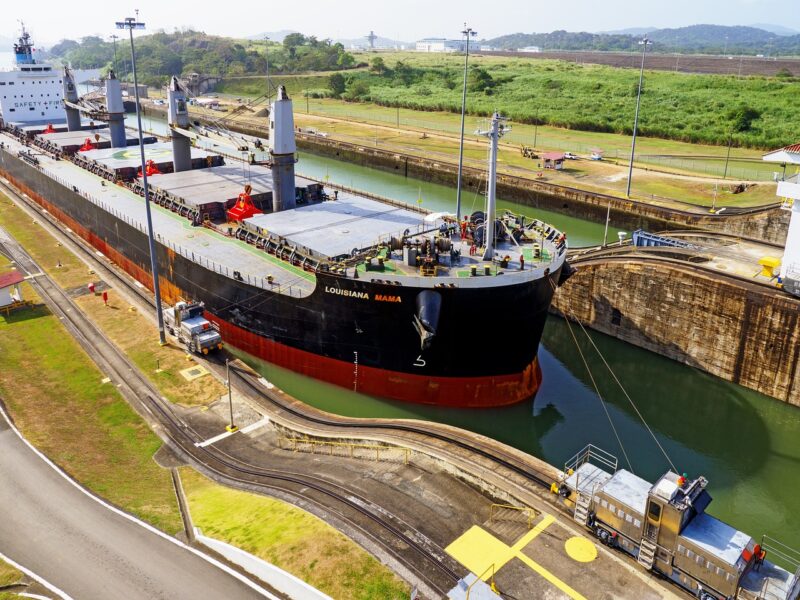Why Shipping Canals Like Panama Are So Important to Global Trade
November 11, 2024

Shipping canals are the lifeblood of global trade, serving as crucial conduits for maritime transportation between countries and continents. Among the most significant of these waterways is the Panama Canal, which has transformed international shipping routes since its opening in 1914. This article will explore the critical importance of shipping canals, focusing on the Panama Canal, and how they facilitate global commerce, impact economies, and support trade efficiency.
1. The Historical Context of the Panama Canal
The Panama Canal’s history is a testament to human ingenuity and determination. The initial attempt to construct the canal began under French leadership in the 1880s but failed due to engineering challenges and diseases like yellow fever and malaria. Eventually, the United States completed the construction, and the canal opened on August 15, 1914.
This ambitious project was designed to shorten maritime routes significantly. Before its existence, vessels had to navigate around the southern tip of South America via the treacherous Strait of Magellan, adding considerable distance and time to trade journeys. By creating a direct path between the Atlantic and Pacific Oceans, the Panama Canal has reduced travel distance by nearly 8,000 nautical miles, revolutionizing trade efficiency.
2. Economic Impacts of the Panama Canal
The Panama Canal plays a vital role in the economies of not only Panama but also the global economy. The canal generates significant revenue for Panama—an estimated $2 billion annually from tolls and related services. This money fuels the national budget and supports social and infrastructural projects within Panama, highlighting the canal’s contribution to the nation’s economic stability.
Furthermore, the canal benefits global trade by ensuring that goods can move quickly and efficiently between markets. Goods that used to take weeks or even months to transport can now reach their destinations in a fraction of the time. This acceleration in shipping has led to increased supply chain efficiency, reducing costs for businesses and making products more accessible to consumers worldwide.
3. Facilitating International Trade
Shipping canals like the Panama Canal are essential for facilitating international trade. In 2022, approximately 14,000 vessels transited the Panama Canal, carrying around 6% of global maritime trade. This statistic underscores how central the canal is to the operation of global supply chains.
Canals help reduce reliance on land-based transportation, which can be subject to delays, tariffs, and logistical challenges. Through the Panama Canal, companies can send large cargo vessels laden with goods across the ocean efficiently and cost-effectively.
The canal also supports the growing trend toward larger container ships. The expansion project completed in 2016 allowed for increased vessel sizes, accommodating new mega-ships that can carry up to 14,000 TEUs (Twenty-foot Equivalent Units). Consequently, businesses can benefit from economies of scale, further driving down shipping costs and enhancing trade opportunities.
4. Environmental Considerations
While shipping canals are crucial for global trade, the environmental impact of maritime activities must be acknowledged. Shipping is generally more fuel-efficient than land transport; however, the increased traffic can still lead to marine pollution, habitat destruction, and biodiversity loss.
For example, initiatives are now in place to implement eco-friendly practices in shipping. The Panama Canal Authority is committed to environmental conservation efforts, focusing on reforestation and sustainable marine practices. Reducing the environmental footprint of shipping is vital for balancing economic growth with ecological preservation.
5. The Strategic Importance of Shipping Canals
In geopolitical terms, the control and maintenance of shipping canals such as the Panama Canal are of paramount importance. Control over these vital waterways can influence international relations and trade agreements. For instance, in times of international conflict or sanctions, the ability to navigate through or around the Panama Canal can significantly affect trade routes and access to markets.
Moreover, the canal’s position allows economic powerhouses like the United States and China to bolster their global influence. The geopolitical implications of controlling such strategic routes often lead to international negotiations and partnerships, making these waterways focal points for diplomatic activity.
6. Future Developments and Challenges
As global trade continues to grow, the importance of shipping canals will only increase. Future developments may include further expansions or enhancements to accommodate larger vessels and improved logistics systems. However, there are numerous challenges ahead, including the need to modernize outdated infrastructure, manage environmental impacts, and adapt to the changing dynamics of international trade.
Additionally, emerging technologies like autonomous vessels and smart shipping systems could revolutionize how goods are transported through canals, potentially increasing efficiency and safety.
Conclusion
In summary, shipping canals like the Panama Canal are indispensable to global trade. They reduce shipping times, lower transportation costs, and are critical to economic stability around the world. While enjoying the benefits of faster trade, it is vital to consider the environmental impacts and geopolitical significance of these waterways. As the world evolves, the continued significance of canals will be paramount not only for commerce but also for diplomacy and international relations. Understanding their importance is crucial for businesses, governments, and consumers alike as we navigate an interconnected global economy.








